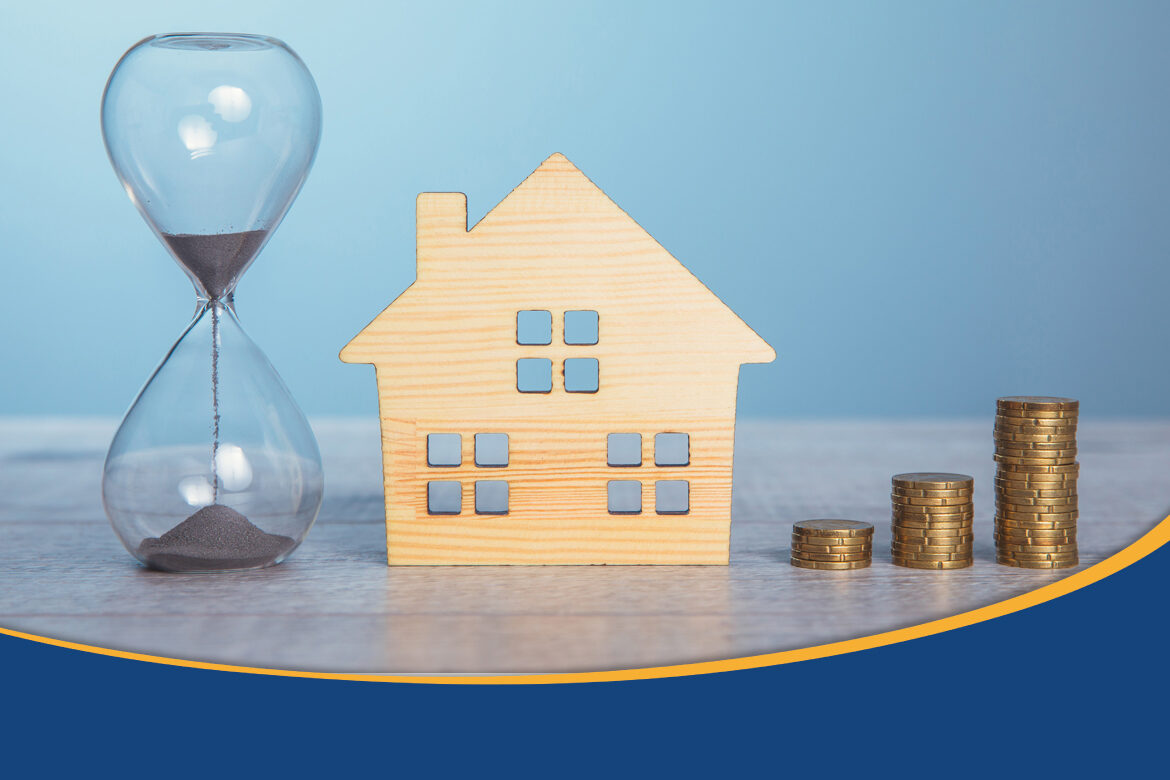Market fluctuations are common when it comes to real estate. However, with both mortgage rates and home prices inching upward, many potential homebuyers are searching for new solutions. Some lenders now offer 40-year mortgages to provide financial relief for home seekers.
The question many members are asking is whether a 40-year mortgage makes financial sense. Extended terms can indeed help reduce your monthly payments. But you should also consider their long-term effects. In this article, we’ll walk you through the pros and cons of 40-year mortgages and provide examples along the way.
What is a 40-Year Mortgage?
As a homebuyer, you have access to a variety of home loan options. The most popular conventional, fixed-rate mortgages generally have 15- or 30-year terms. New 40-year mortgages were designed to give homebuyers more flexibility by helping to lower their monthly payments.
While lower payments are always a nice perk, 40-year mortgages are not widely adopted within the mortgage industry. You’ll most often find these loans offered through online lenders and mortgage brokers.
These mortgages can also be non-conforming, meaning they don’t meet the Federal Housing Finance Agency (FHFA) guidelines. They often include periods of interest-only payments that can be confusing for borrowers.
Why are 40-Year Mortgages Appealing?
The biggest draw to these longer-term mortgages is that they help to lower your monthly payments. Any assistance when both mortgage rates and home values are rising is a welcome relief for homebuyers.
The best way to illustrate the impact your loan term can have on the principal and interest portion of your mortgage payment is through a simple example.
Example: Assume you borrow $350,000 for a new home. Your approved mortgage rate is 5.0% APR.
The following figures show your monthly principal and interest payment:
- 30-Year Mortgage: $1,878.88
- 40-Year Mortgage: $1,687.69
The 40-year mortgage is $191.19 cheaper monthly. That’s an annual savings of $2,294.28. So, you can see why the longer-term loans are appealing. The difference will become even more substantial if the loan amount or interest rate increases further.
However, before you choose the 40-year option with the lower monthly payments, there are things to consider. First, it’s not uncommon for 40-year mortgage rates to be slightly higher than 30-year mortgages. And as previously mentioned, these loans can often include periods of interest-only payments that can affect the cost of your loan.
In addition, there are other drawbacks that are worth noting.
What are the Downsides of 40-Year Mortgages?
- Higher Interest Payments
Anytime you extend a loan term, whether it’s a mortgage or car loan, the amount of interest you pay will increase. Mortgage loans are high-dollar, long-term loans and interest can be costly.
Using the example from earlier, the additional interest payments add up to a significant amount. If you kept both loans to maturity, the 40-year mortgage would cost you a whopping $133,695.05 extra in interest compared to the 30-year option!
- Build Equity Slower
An extended term means it will take longer to pay off the loan and build equity in the property. To illustrate this effect, assume it’s been ten years since you initially financed your home.
30-Year Loan Balance After 10 Years: $284,697.23
40-Year Loan Balance After 10 Years: $314,385.27
With the 30-year mortgage, you would have paid off an additional $29,688.04 versus the 40-year mortgage. That’s valuable equity you can access with a home equity loan or additional funds you’ll receive if you sell the property.
- Lender Options
Most lenders refrain from offering 40-year mortgages. You’ll typically find these loans offered through online lenders or mortgage brokers. That could make finding a 40-year mortgage challenging or force you to rely on a lender who might have a limited reputation.
Are There Other Solutions?
Between rising mortgage rates and home values, a 40-year mortgage will help lower your monthly principal and interest payments. If you’re looking at a starter home, you could use this loan and enjoy lower monthly payments. Then, sell the house after several years and upgrade to a larger property. However, you’ll generate less equity that will be valuable toward your new home’s down payment and closing costs.
A viable alternative to consider is an adjustable-rate mortgage (ARM). These loans have variable interest rates, meaning they can fluctuate over time. However, they generally have a much lower introductory rate. They can be the perfect option for individuals seeking a starter home or those not planning to live in the property long-term.
To illustrate, consider a 7/1 ARM. This loan has a low, fixed-rate introductory period of seven years. Afterward, the interest rate can change annually. If you know you won’t be in the home for more than seven years, you can enjoy the lower payments. Then, sell the property before the rate ever adjusts.
We’re Here to Help!
Whether you’re buying your first home or your forever home, it’s a significant financial decision. It’s important to explore all your options and determine which home loan makes the most sense for you and your finances.
If you have questions about financing a home or want to see the impact different loans will have on your budget, we’re ready to help. Please stop by any of our convenient branch locations or call 800-782-4899 to schedule an appointment with one of our home loan experts.
Each individual’s financial situation is unique and readers are encouraged to contact the Credit Union when seeking financial advice on the products and services discussed. This article is for educational purposes only; the authors assume no legal responsibility for the completeness or accuracy of the contents.

